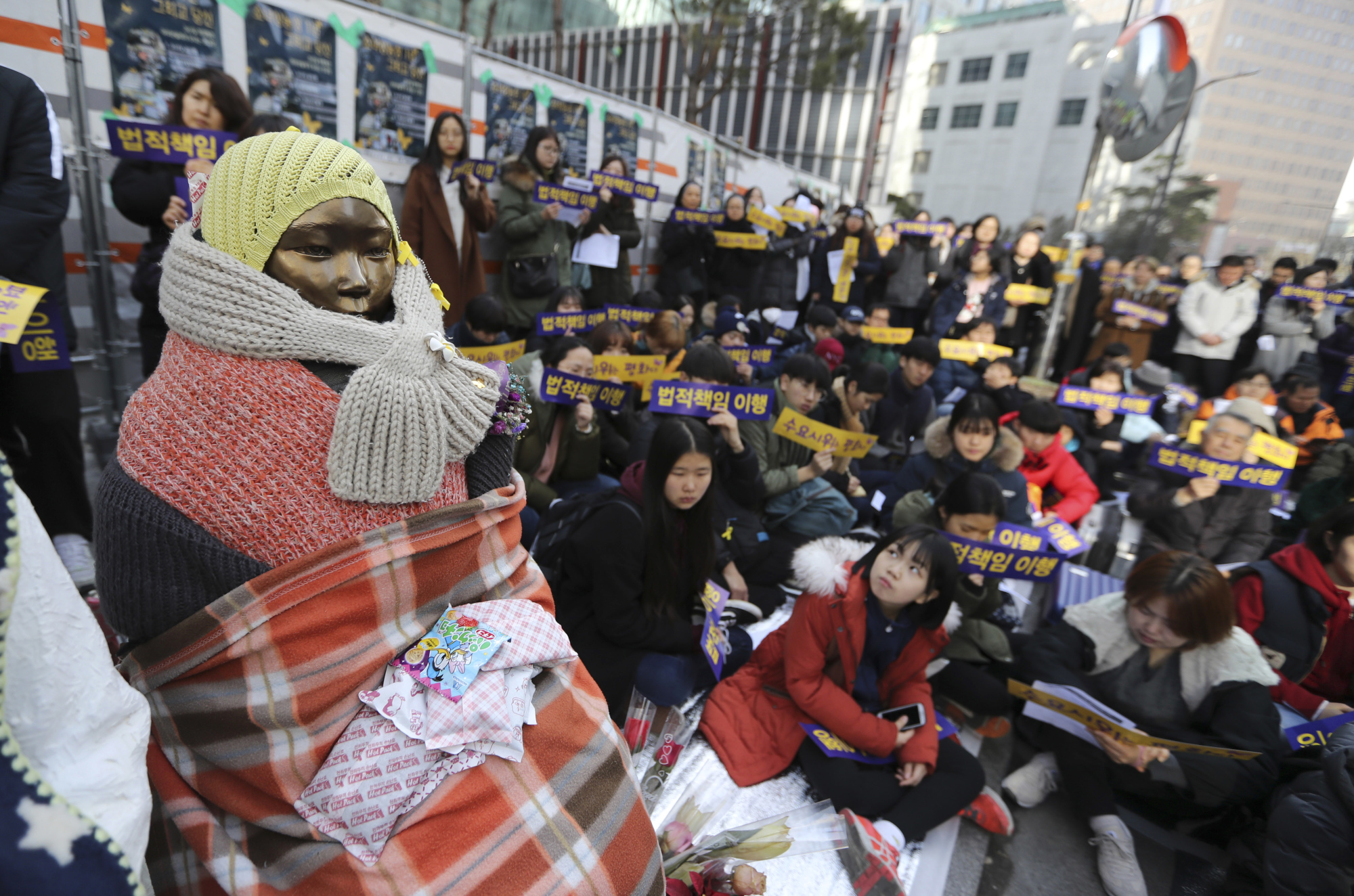On April 4, Japan's ambassador to South Korea finally returned to his post in Seoul after a three-month hiatus. Prime Minister Shinzo Abe's government recalled him in a diplomatic pout over two bronze statues depicting "comfort women"; one is placed close to the Japanese Embassy in Seoul, another adjacent to the consulate in Busan. There were expectations that Ambassador Yasumasa Nagamine would return sooner, but reportedly Abe insisted on prolonging the absence to make sure Seoul got the message about moving the statues.
Instead, Abe face-planted by sending the ambassador back without resolving the statue issue, one that should never have been made into such a big deal in the first place. Not having an ambassador in Seoul during a leadership transition amid heightened tensions on the Korean Peninsula was woeful diplomacy that was never going to solve the problem to Abe's satisfaction, so he set himself up for this embarrassing pie-in-the-face moment.
By sheer chance I was flying into Seoul the same day, but because I was flying on Korean Airlines, where the maps identify Takeshima as Dokdo and the Sea of Japan as the East Sea, I suspected he was not on my plane. Close to my hotel is the infamous comfort women statue, which I don't believe violates the Vienna Convention — as some in Japan have claimed — because it has not impaired the peace or dignity of the embassy. As was the case well before Japan's ambassador left in a huff, there is in fact no embassy at the site. The previous building was demolished and work continues on building a replacement. So the comfort woman statue peers silently across the street at a tall white fence that encloses the construction site, fronted by a phalanx of police buses.

















With your current subscription plan you can comment on stories. However, before writing your first comment, please create a display name in the Profile section of your subscriber account page.